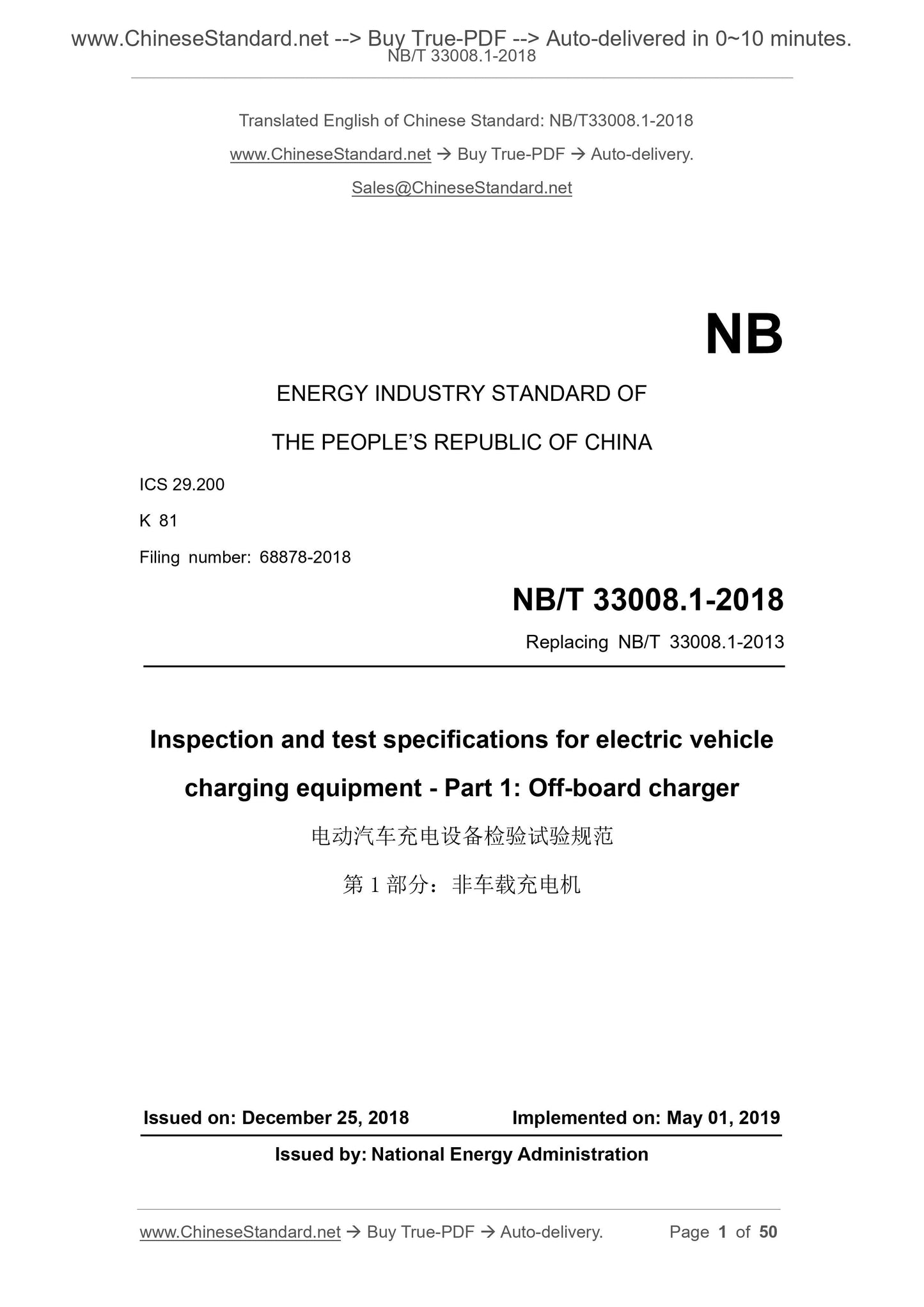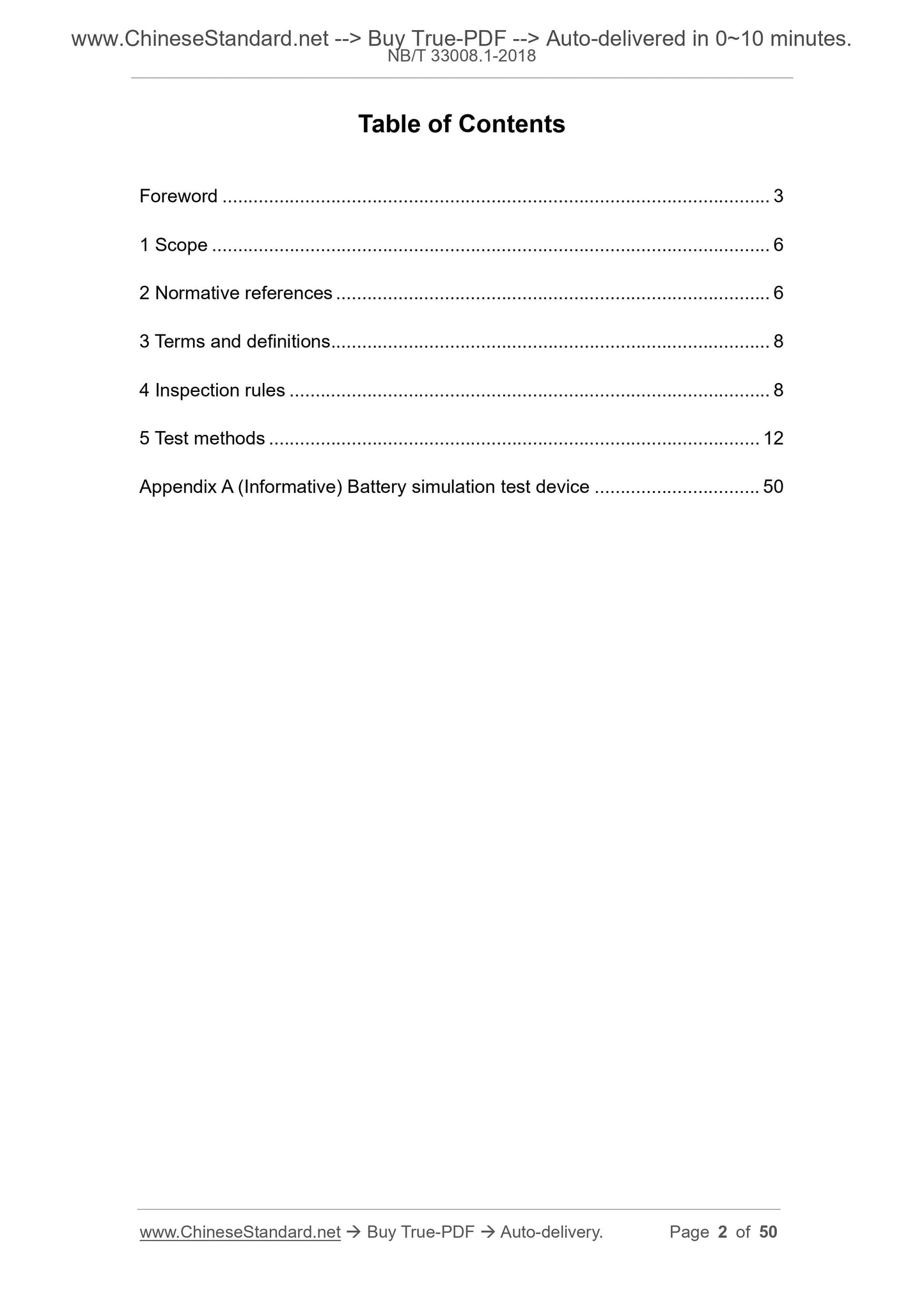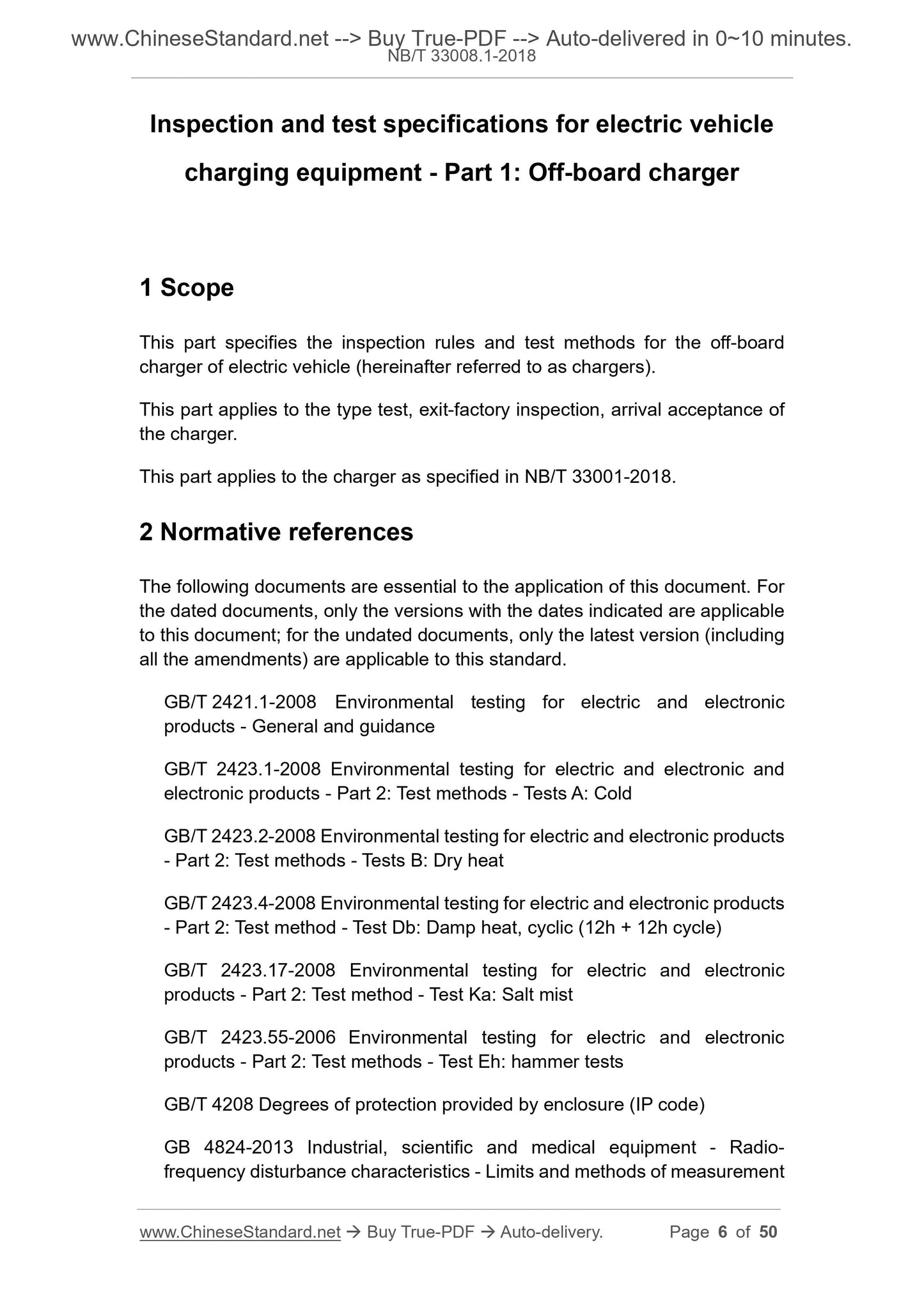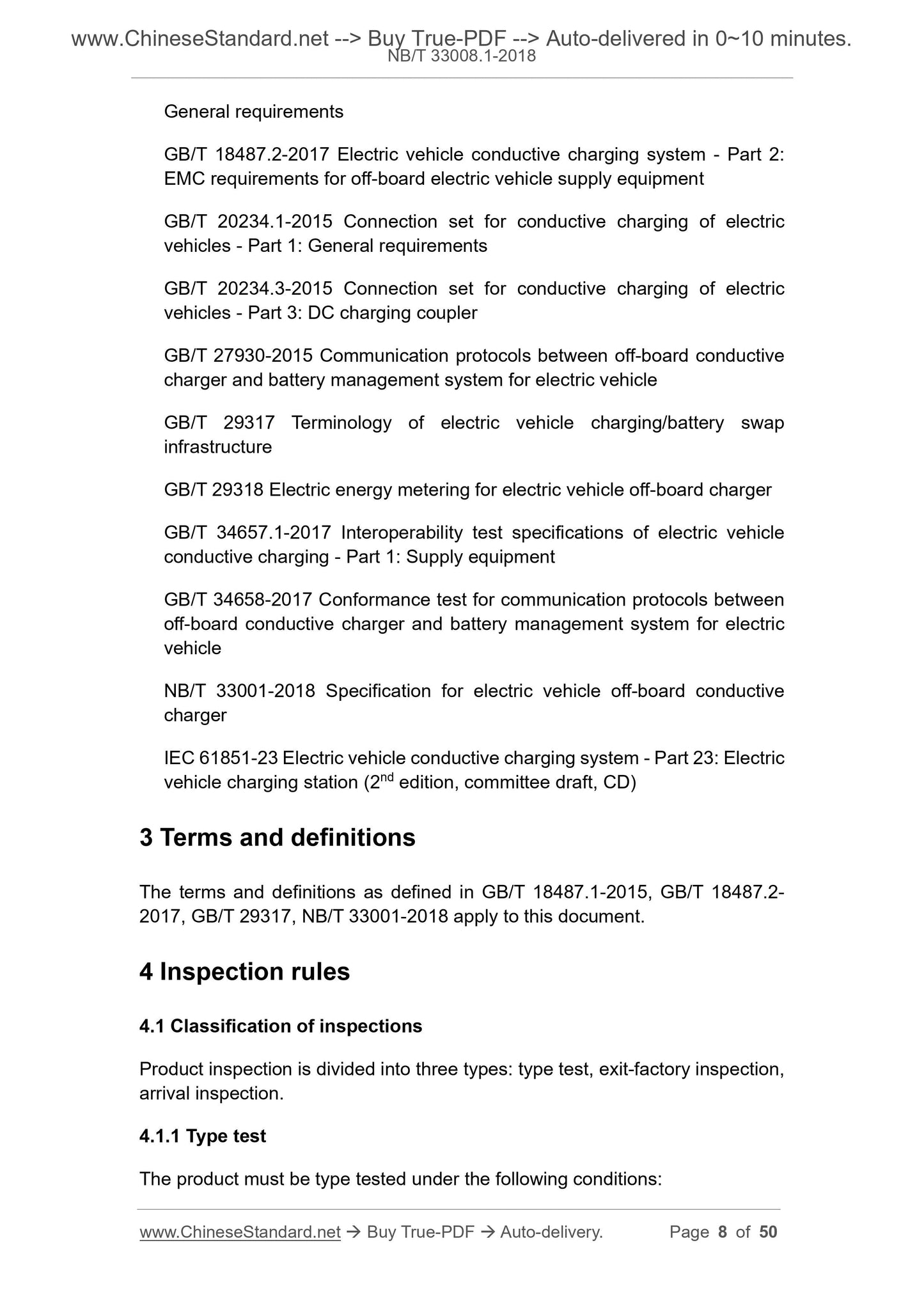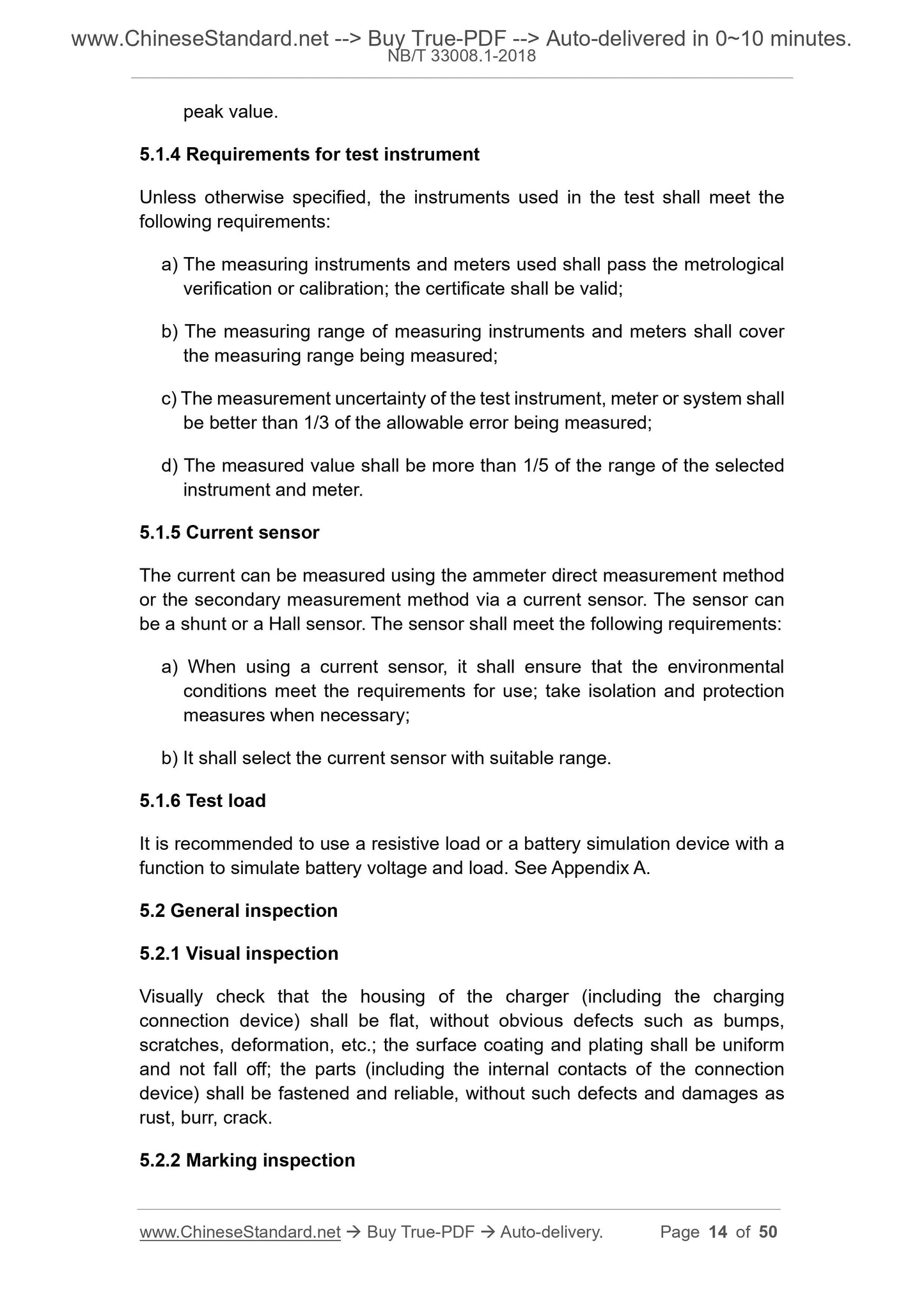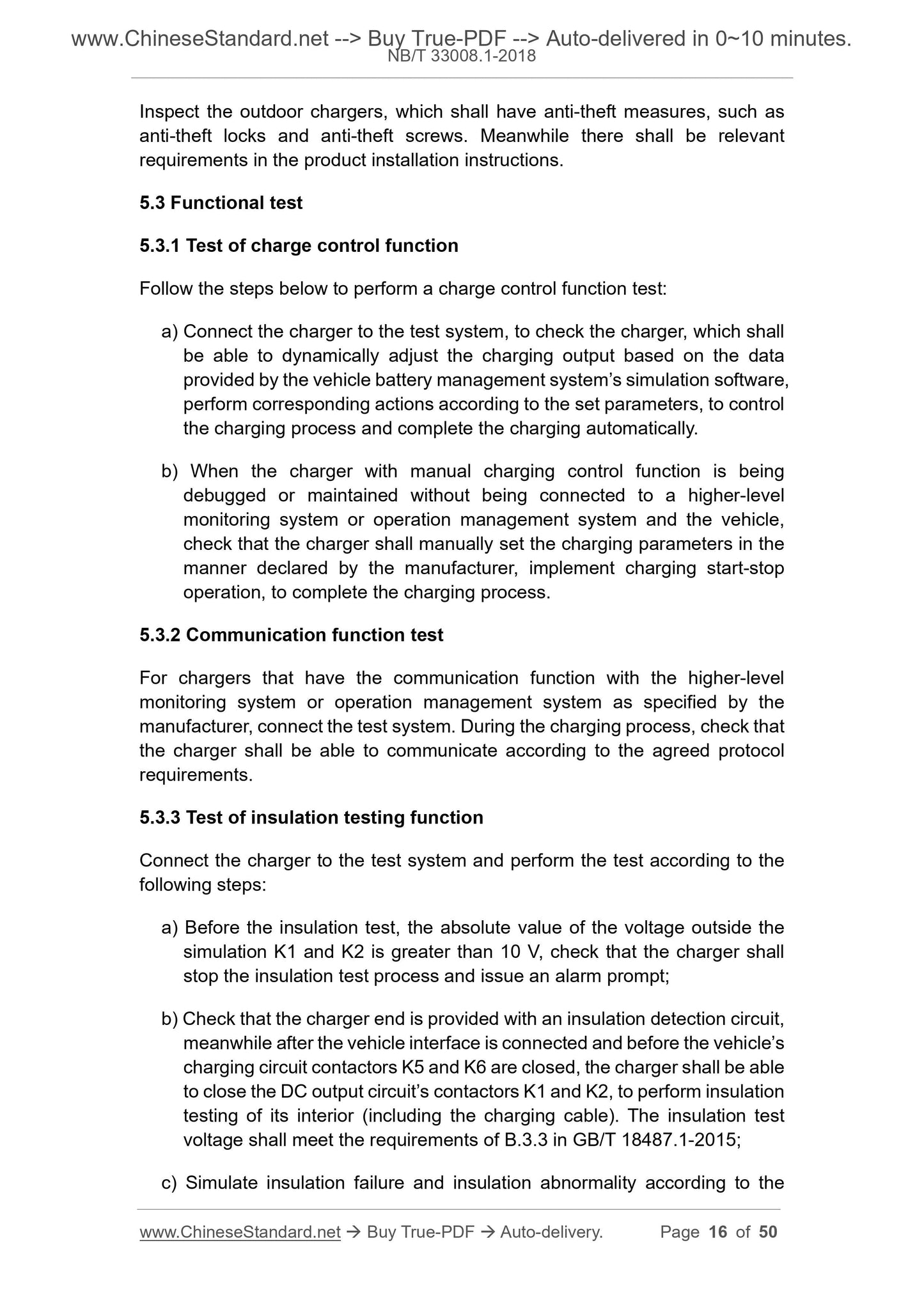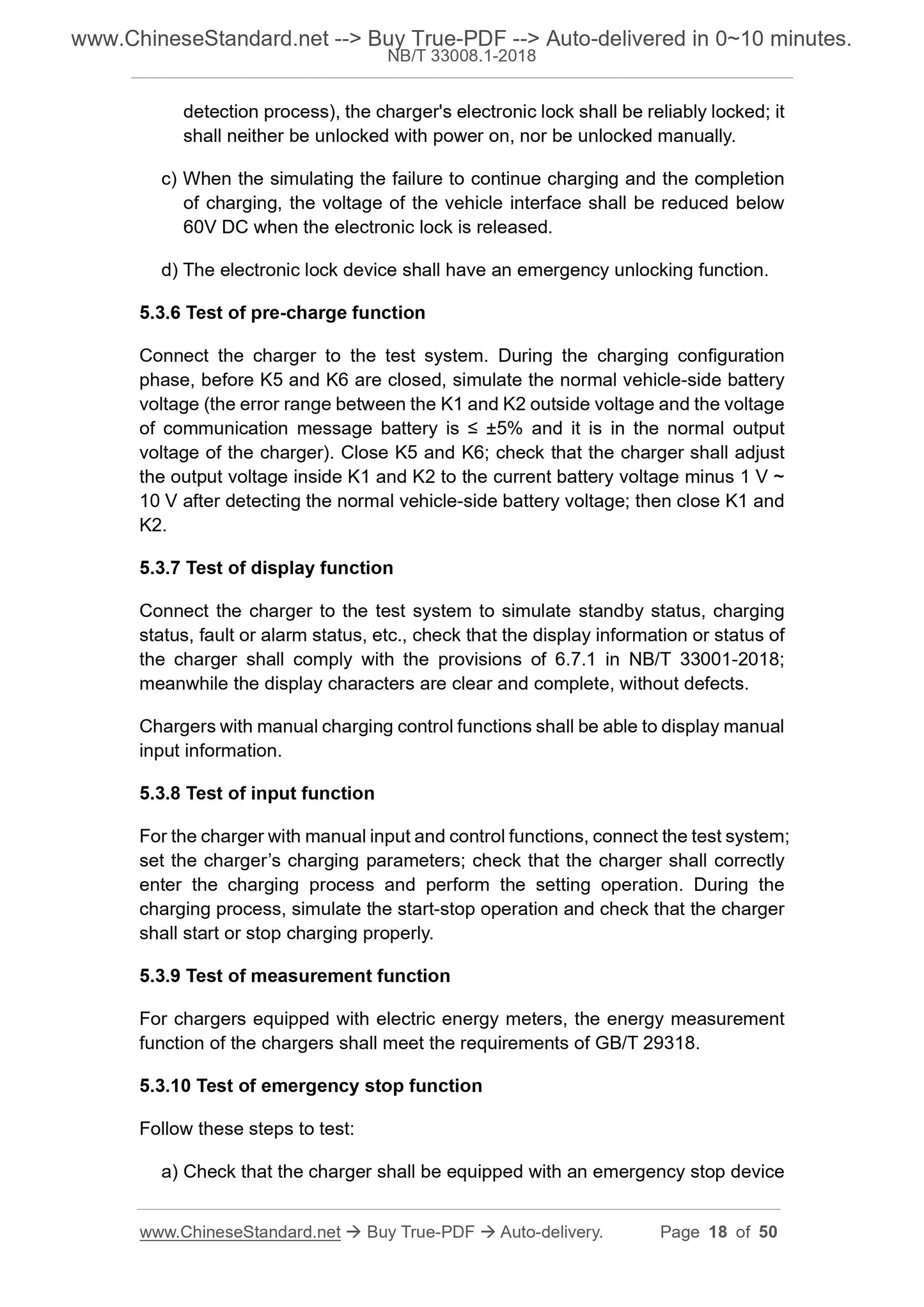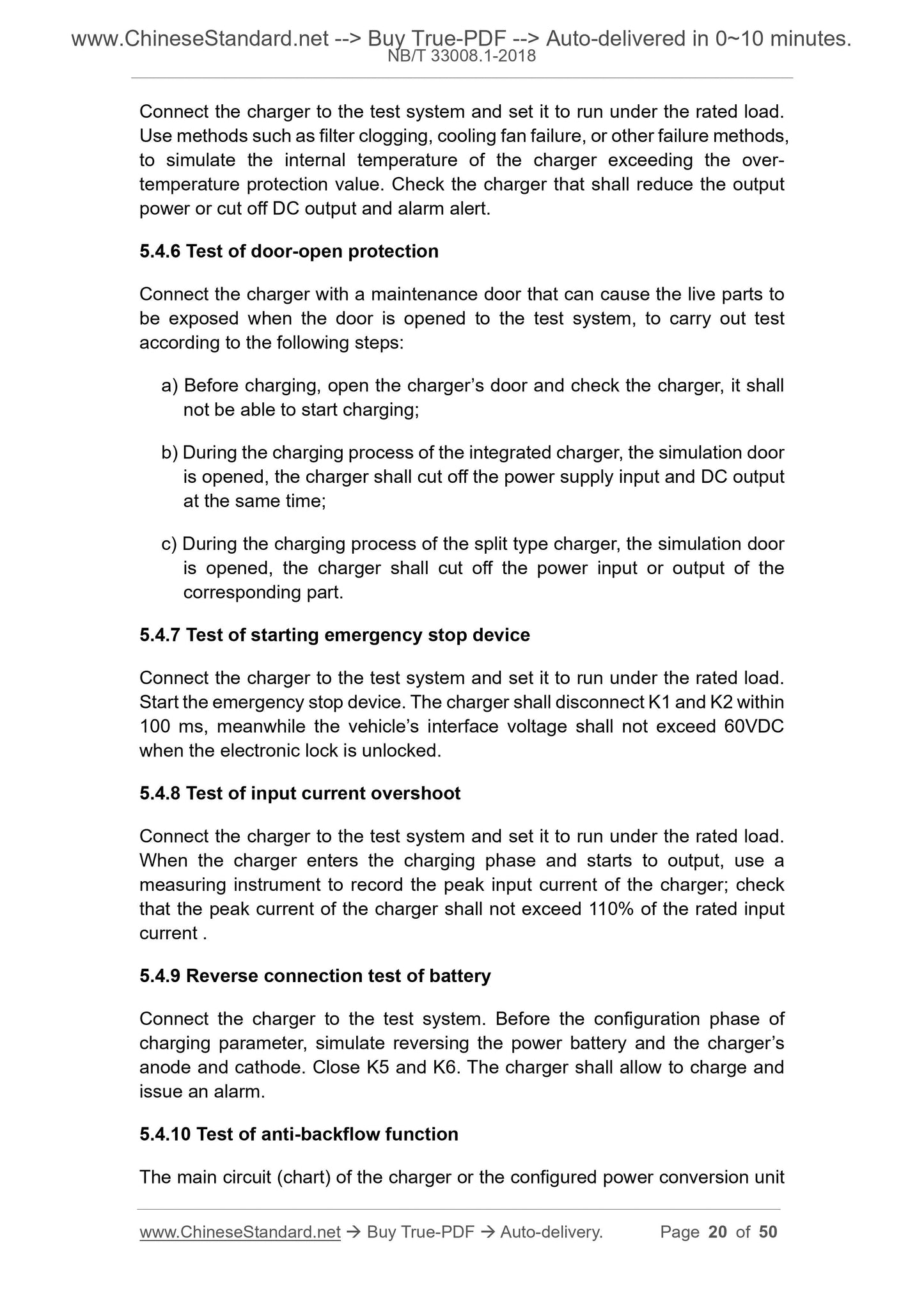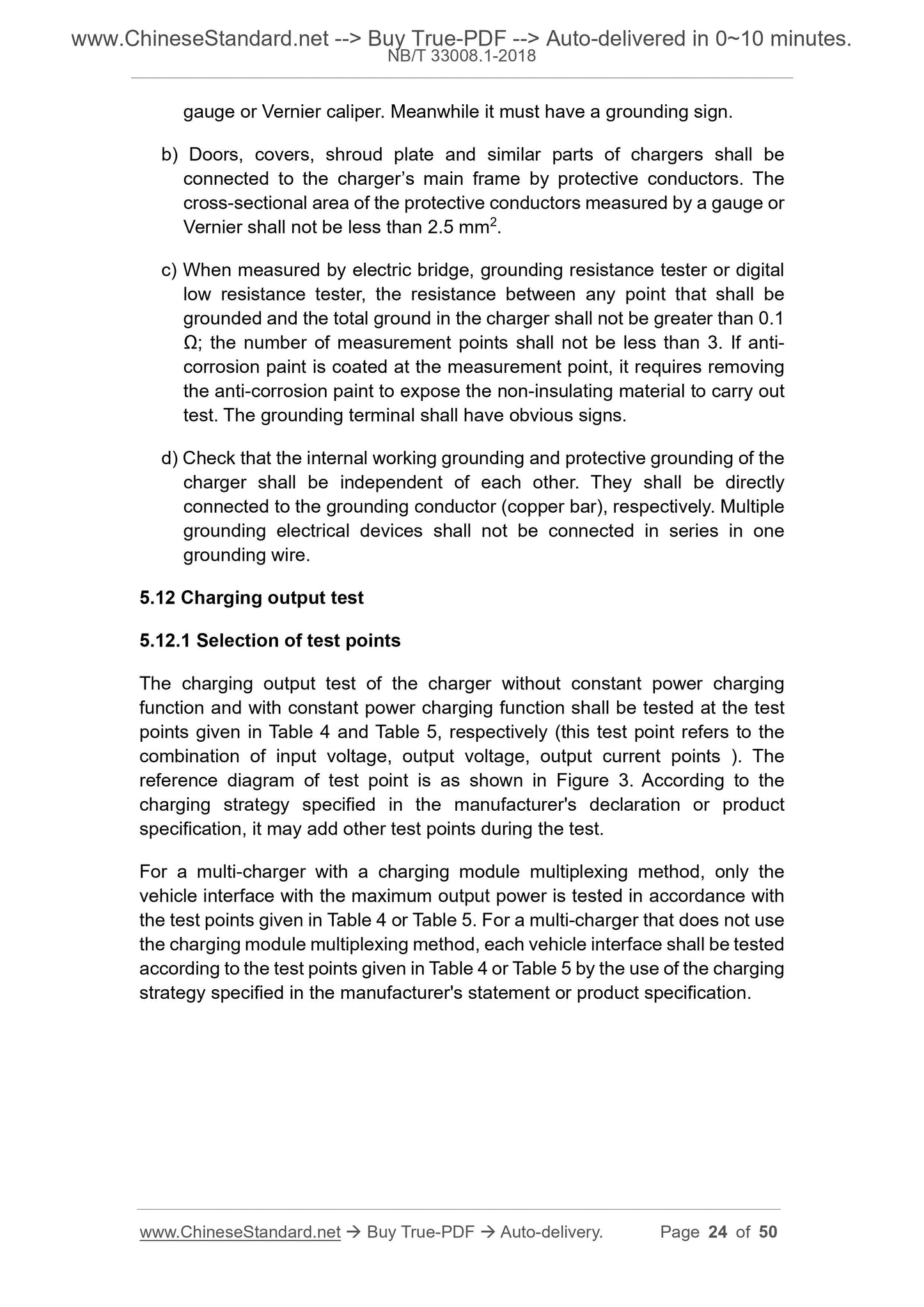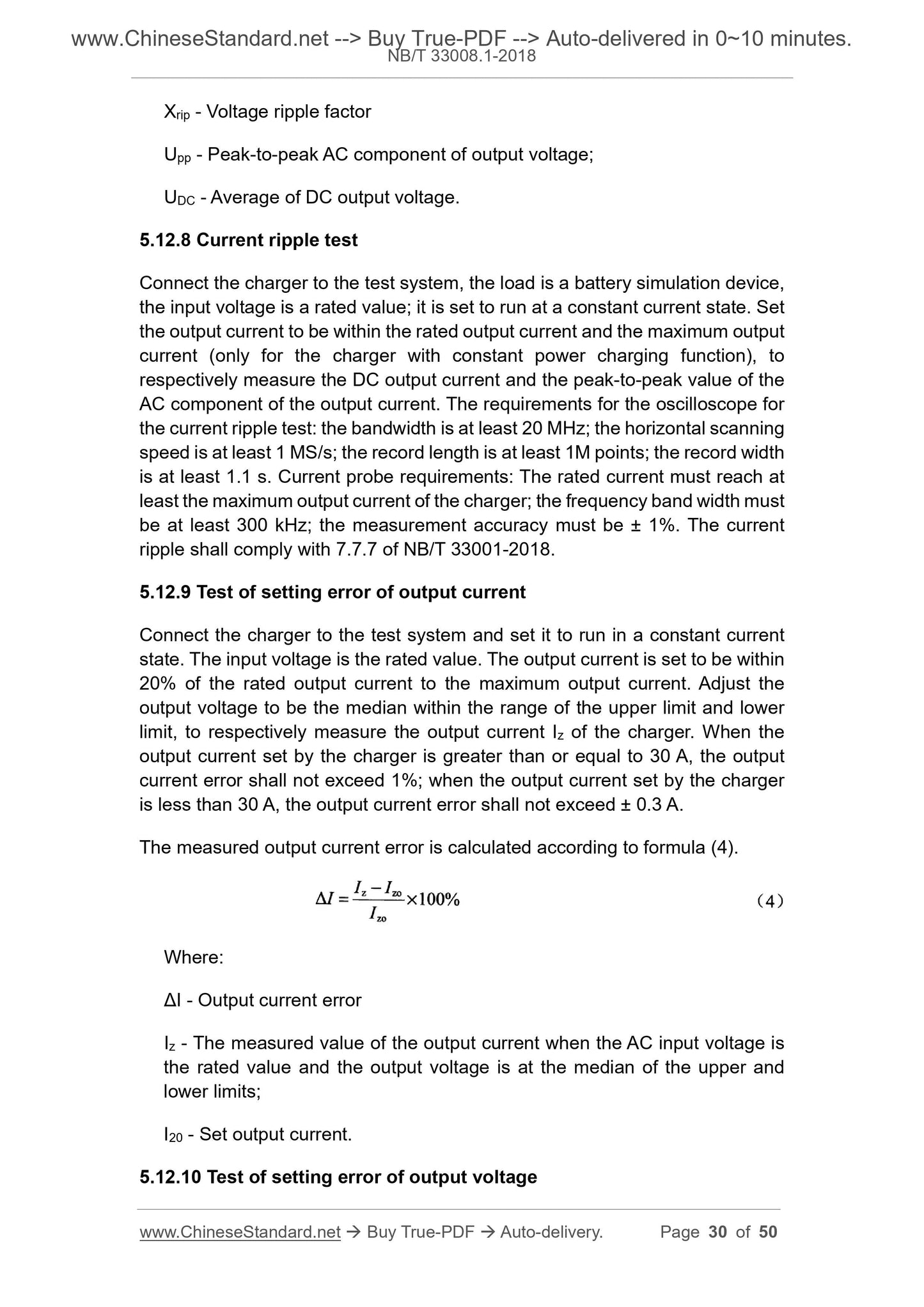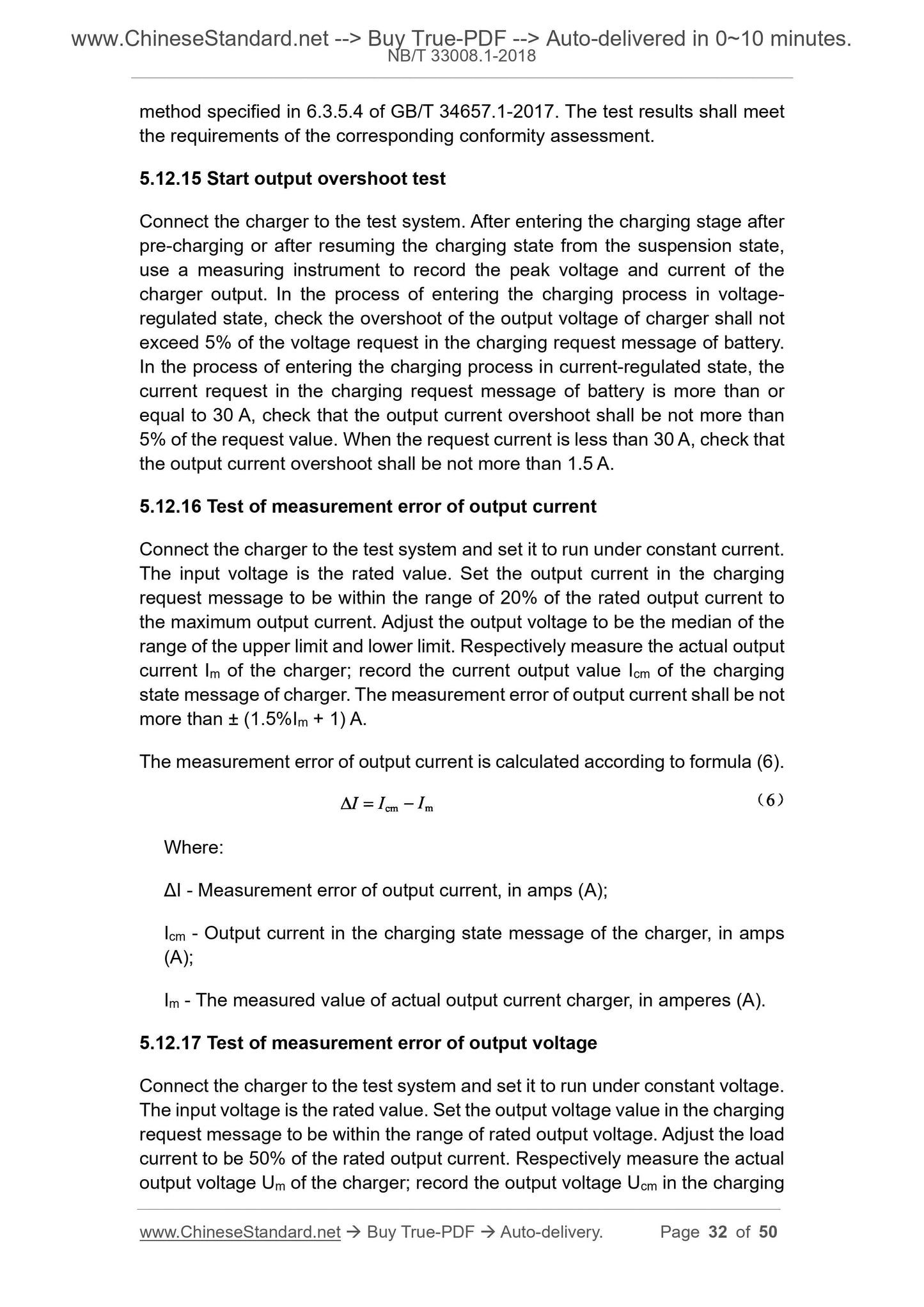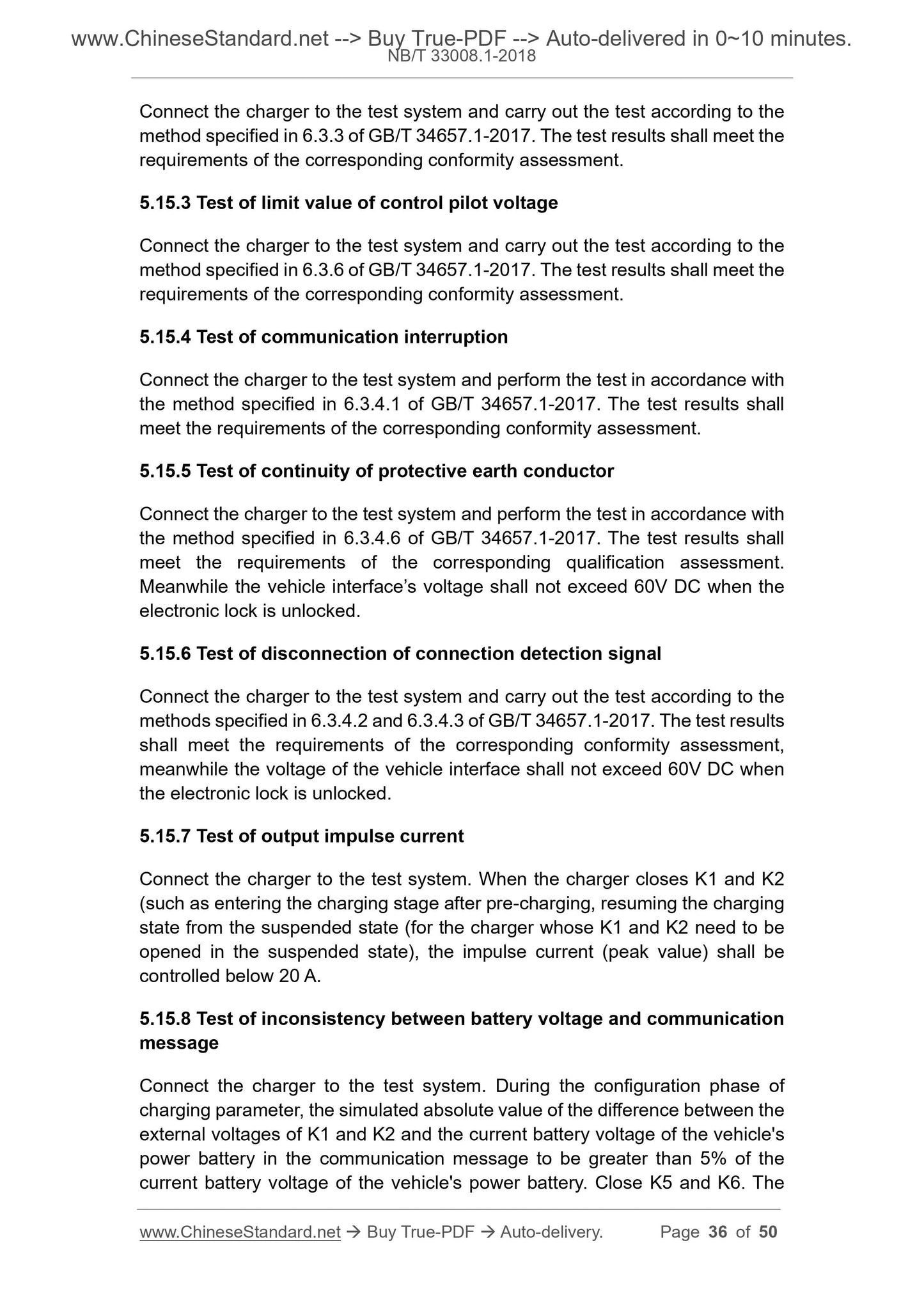1
/
of
12
www.ChineseStandard.us -- Field Test Asia Pte. Ltd.
NB/T 33008.1-2018 English PDF (NB/T33008.1-2018)
NB/T 33008.1-2018 English PDF (NB/T33008.1-2018)
Regular price
$500.00
Regular price
Sale price
$500.00
Unit price
/
per
Shipping calculated at checkout.
Couldn't load pickup availability
NB/T 33008.1-2018: Inspection and test specifications for electric vehicle charging equipment - Part 1: Off-board charger
Delivery: 9 seconds. Download (and Email) true-PDF + Invoice.Get Quotation: Click NB/T 33008.1-2018 (Self-service in 1-minute)
Newer / historical versions: NB/T 33008.1-2018
Preview True-PDF
Scope
This part specifies the inspection rules and test methods for the off-boardcharger of electric vehicle (hereinafter referred to as chargers).
This part applies to the type test, exit-factory inspection, arrival acceptance of
the charger.
This part applies to the charger as specified in NB/T 33001-2018.
Basic Data
| Standard ID | NB/T 33008.1-2018 (NB/T33008.1-2018) |
| Description (Translated English) | Inspection and test specifications for electric vehicle charging equipment - Part 1: Off-board charger |
| Sector / Industry | Energy Industry Standard (Recommended) |
| Classification of Chinese Standard | K81 |
| Classification of International Standard | 29.200 |
| Word Count Estimation | 36,336 |
| Date of Issue | 2018-12-25 |
| Date of Implementation | 2019-05-01 |
| Older Standard (superseded by this standard) | NB/T 33008.1-2013 |
| Quoted Standard | GB/T 2421.1-2008; GB/T 2423.1-2008; GB/T 2423.2-2008; GB/T 2423.4-2008; GB/T 2423.17-2008; GB/T 2423.55-2006; GB/T 4208; GB 4824-2013; GB/T 7251.1-2013; GB 17625.1; GB/T 17625.2; GB/T 17625.7; GB/T 17625.8; GB/T 17626.2; GB/T 17626.3; GB/T 17626.4 |
| Regulation (derived from) | National Energy Administration Announcement No.16 of 2018 |
| Issuing agency(ies) | National Energy Administration |
| Summary | This standard specifies the inspection rules and test methods for electric vehicle non-vehicle chargers (hereinafter referred to as chargers). This part is applicable to the type test, factory inspection and arrival acceptance of the charger. This section applies to the charger specified in NB/T 33001-2018. |
Share
